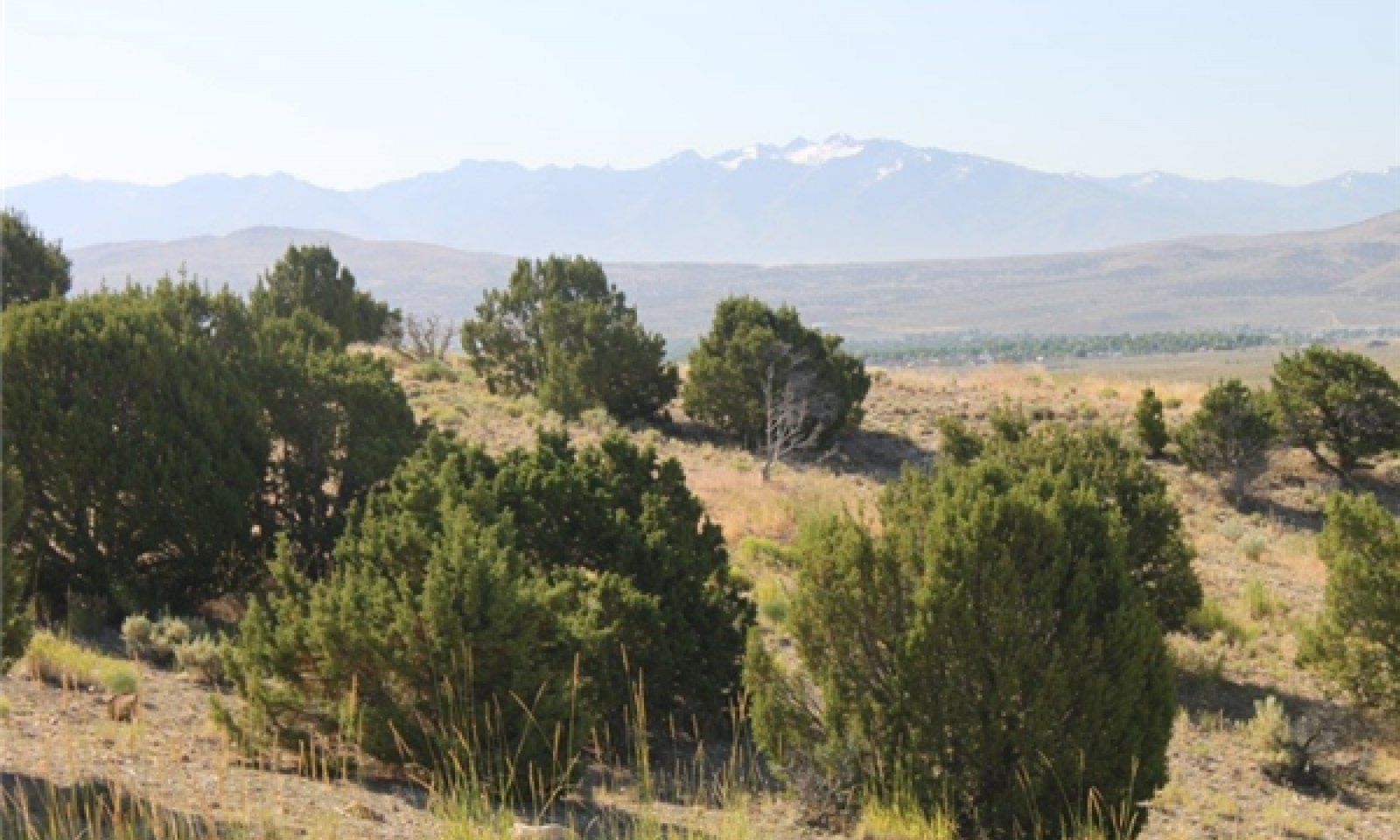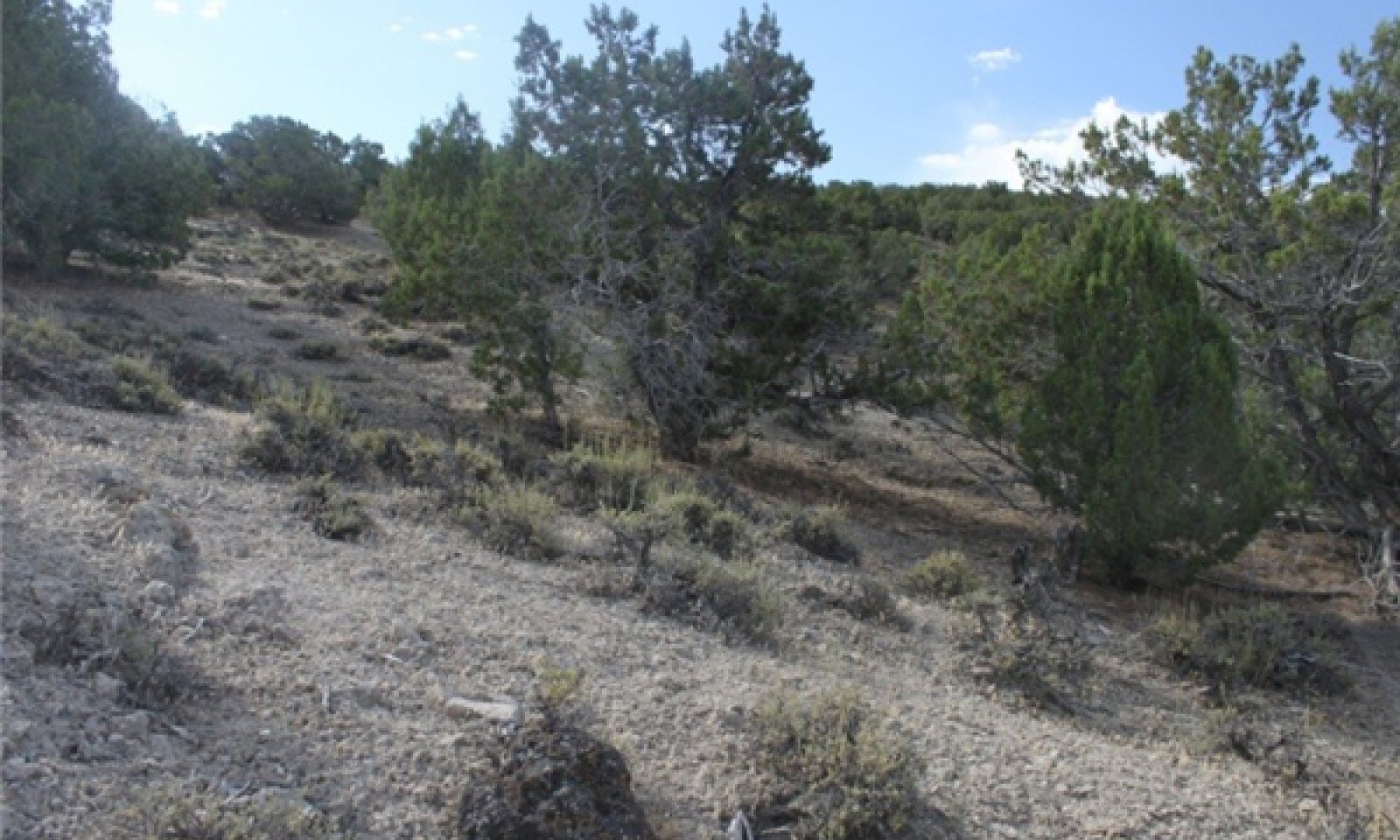
Thin Surface Juniper
Scenario model
Current ecosystem state
Select a state
Management practices/drivers
Select a transition or restoration pathway
- Transition A More details
- Transition B More details
- Transition A More details
- Transition B More details
- Restoration pathway A More details
- Transition A More details
- Transition B More details
- Transition A More details
-
No transition or restoration pathway between the selected states has been described
Target ecosystem state
Select a state
Description
The Reference State 1.0 is representative of the natural range of variability under pristine conditions. This Reference State has four general community phases: an old-growth woodland phase, a shrub-herbaceous phase, an immature woodland phase, and an infilled woodland phase. State dynamics are maintained by interactions between climatic patterns and disturbance regimes. Negative feedbacks enhance ecosystem resilience and contribute to the stability of the state. These include the presence of all structural and functional groups, low fine fuel loads, and retention of organic matter and nutrients. Plant community phase changes are primarily driven by fire, periodic long-term drought, and/or insect or disease attack.
Submodel
State 2
Current Potential State



Description
This state is similar to the Reference State 1.0, with four general community phases: an old-growth woodland phase, a shrub-herbaceous phase, an immature woodland phase, and an infilled woodland phase. Ecological function has not changed, however the resiliency of the state has been reduced by the presence of non-native species. These non-natives, particularly cheatgrass, can be highly flammable and promote fire where historically fire had been infrequent. Negative feedbacks enhance ecosystem resilience and contribute to the stability of the state. These include the presence of all structural and functional groups, low fine fuel loads and retention of organic matter and nutrients. Positive feedbacks decrease ecosystem resilience and stability of the state. These include the non-natives’ high seed output, persistent seed bank, rapid growth rate, ability to cross pollinate, and adaptations for seed dispersal. Fires within this community with the small amount of non-native annual species present are likely still small and patchy due to low fuel loads. This fire type will create a plant community mosaic that will include all/most of the following community phases within this state.
Submodel
State 3
Infilled Tree State




Description
This state has two community phases with a canopy cover ranging from 30 to 50 percent of Utah juniper. The phases exhibit a mixed age class. Older trees are at maximal height and upper crowns may be flat-topped or rounded. Younger trees are typically cone- or pyramidal-shaped. Understory vegetation is sparse due to increasing shade and competition from trees.
Submodel
Description
This state has one community phase. It is characterized by the dominance of annual non-native species such as cheatgrass and tansy mustard. Over time, rabbitbrush may dominate the overstory.
Submodel
Description
This state has one community phase dominated by Utah juniper. Abiotic factors including soil redistribution and erosion, soil temperature, soil crusting and sealing are primary drivers of ecological condition within this state. Soil moisture, soil nutrients and soil organic matter distribution and cycling are severely altered due to degraded soil surface conditions. Utah juniper dominates the overstory and herbaceous species may be present in trace amount particularly under tree canopies. Regeneration of trees or herbaceous species is not evident.
Submodel
Mechanism
Trigger: Introduction of non-native annual species.
Slow variables: Over time the annual non-native plants will increase within the community.
Threshold: Any amount of introduced non-native species causes an immediate decrease in the resilience of the site. Annual non-native species cannot be easily removed from the system and have the potential to significantly alter disturbance regimes from their historic range of variation.
Mechanism
Trigger: Time and a lack of disturbance allow trees to dominate site resources; may be coupled with inappropriate herbivory that favors shrub and tree dominance.
Slow variables: Over time the abundance and size of trees will increase. Organic matter inputs are reduced.
Threshold: Juniper canopy cover is greater than 30 percent. Little understory vegetation remains due to competition with trees for site resources.
Mechanism
Trigger: Time and a lack of disturbance allow trees to dominate site resources; may be coupled with inappropriate grazing management that favors shrub and tree dominance.
Slow variables: Over time the abundance and size of trees will increase. Organic matter inputs will decrease.
Threshold: Utah juniper canopy cover is greater than 30 percent. Little understory vegetation remains due to competition with trees for site resources.
Mechanism
Threshold: Cheatgrass or other non-native annuals dominate understory. Loss of deep-rooted perennial bunchgrasses changes spatial and temporal nutrient cycling and nutrient redistribution, and reduces soil organic matter. Increased canopy cover of trees allows severe stand-replacing fire. The increased seed bank of non-native, annual species responds positively to post-fire conditions facilitating the transition to an Annual State.
Mechanism
Manual or mechanical thinning of trees coupled with seeding. Probability of success is highest from community phase 3.1.
Mechanism
Trigger: Canopy fire reduces the juniper overstory and facilitates the annual non-native species in the understory to dominate the site.
Slow variables: Over time, cover, production and seed bank of annual non-native species increases. Organic matter inputs decrease.
Threshold: Loss of deep-rooted perennial bunchgrasses and shrubs changes temporal and spatial nutrient capture and cycling within the community. Increased canopy cover of trees allows severe stand-replacing fire. The increased seed bank of non-native, annual species responds positively to post-fire conditions facilitating the transition to an Annual State.
Mechanism
Trigger: Time allows for an increase in tree canopy cover and greatly reduces cover of all understory species. Bare ground greatly increases, allowing for soil movement.
Slow variables: Increasing water and wind erosion coupled with lack of cover changes site soil properties: temperature, infiltration rates, and levels of organic matter no longer support reference vegetation.
Threshold: Soil redistribution and erosion is significant and linked to vegetation mortality evidenced by pedestalling and burying of herbaceous species and / or lack of recruitment in the interspaces.
Mechanism
Trigger: Catastrophic fire or multiple fires.
Slow variables: Bare ground interspaces become large and connected; water flow paths long and continuous; understory sparse.
Threshold: Soil redistribution and erosion is significant and linked to vegetation mortality evidenced by pedestalling and burying of herbaceous species and / or lack of recruitment in the interspaces.
Model keys
Briefcase
Add ecological sites and Major Land Resource Areas to your briefcase by clicking on the briefcase (![]() ) icon wherever it occurs. Drag and drop items to reorder. Cookies are used to store briefcase items between browsing sessions. Because of this, the number of items that can be added to your briefcase is limited, and briefcase items added on one device and browser cannot be accessed from another device or browser. Users who do not wish to place cookies on their devices should not use the briefcase tool. Briefcase cookies serve no other purpose than described here and are deleted whenever browsing history is cleared.
) icon wherever it occurs. Drag and drop items to reorder. Cookies are used to store briefcase items between browsing sessions. Because of this, the number of items that can be added to your briefcase is limited, and briefcase items added on one device and browser cannot be accessed from another device or browser. Users who do not wish to place cookies on their devices should not use the briefcase tool. Briefcase cookies serve no other purpose than described here and are deleted whenever browsing history is cleared.
Ecological sites
Major Land Resource Areas
The Ecosystem Dynamics Interpretive Tool is an information system framework developed by the USDA-ARS Jornada Experimental Range, USDA Natural Resources Conservation Service, and New Mexico State University.

